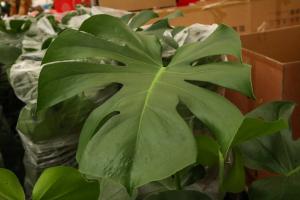Introduction:
Overflowing water can cause extensive damage to your potted plants by suffocating the roots and promoting the growth of fungi and bacteria. The primary reason behind excess water retention is over-watering. In this article, we will share some actionable tips on how to drain excess water from a potted plant, ensuring the health and wellbeing of your beloved plants.
Reasons for Excess Water Retention:
Before diving into the methods for draining excess water, it is essential to understand the reasons for water retention. One major cause is inadequate drainage holes on the pot's bottom, blocking water from seeping out. Another factor is an unbalanced potting mix with clay or loam soil, which prevents excess water from settling at the bottom. Overwhelming watering can also cause excessive water to gather in the pot, which can lead to damage over time.
How to Drain Excess Water:
Here are some practical methods for draining excess water from your potted plants:
Method 1: Tilt and Drain the Pot
This is the easiest and most straightforward method of draining excess water. Simply tilt the pot at an angle, allowing the excess water to flow out of the drainage holes. Ensure that you hold the plant securely during this process to avoid plant damage.
Method 2: Use a Vacuum
A wet and dry vacuum cleaner can help extract excess water from the soil. To implement this method, place the vacuum nozzle over the soil's surface and turn on the vacuum's suction power. Ensure that you do not disturb the plant's roots while performing this process.
Method 3: Remove Excess Soil
If the potting soil is retaining excess water, the solution is to remove some soil from the pot. Using a small shovel or a spoon, scoop out the excess soil or remove up to one-third of the potting soil to improve drainage.
Method 4: Repot the Plant
If the plant is prone to over-watering, it may be best to repot it entirely. Select a new pot with adequate drainage holes and a balanced soil mix, gently remove the plant from the old pot, and transfer it into the new pot. Ensure that you water the new pot slowly and allow the excess water to drain from the bottom.
Tips to Prevent Excess Water Retention:
Prevention is better than cure, and it is essential to take some necessary precautions to prevent excess water retention. Some useful tips include:
- Use pots with adequate drainage holes
- Choose a balanced potting soil mix
- Create a watering schedule based on the plant's needs
- Place pebbles or rocks at the bottom of the pot to facilitate drainage
Conclusion:
Draining excess water from potted plants is an essential maintenance practice that can promote healthy plant growth and prevent damage. Using the methods and tips described in this article, you can ensure that your plants stay healthy and disease-free. Remember to monitor your plant's watering needs and take action immediately if you notice any signs of water retention.

 how many times do yo...
how many times do yo... how many planted tre...
how many planted tre... how many pine trees ...
how many pine trees ... how many pecan trees...
how many pecan trees... how many plants comp...
how many plants comp... how many plants can ...
how many plants can ... how many plants and ...
how many plants and ... how many pepper plan...
how many pepper plan...





























